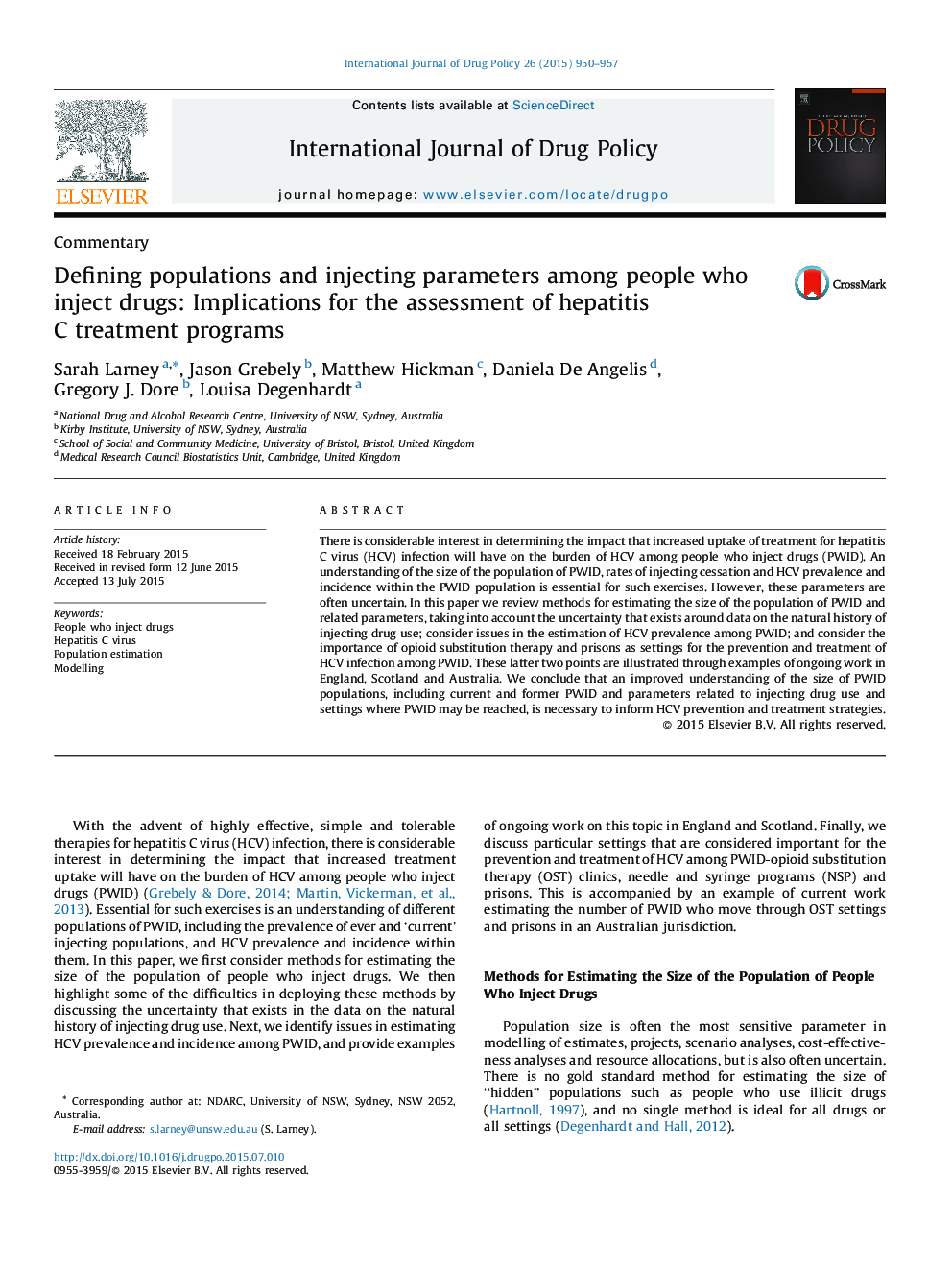| Article ID | Journal | Published Year | Pages | File Type |
|---|---|---|---|---|
| 1075012 | International Journal of Drug Policy | 2015 | 8 Pages |
•Population parameters relating to people who inject drugs (PWID) are often uncertain.•This creates uncertainty in estimates of the potential impact of treatment for hepatitis C virus (HCV) in PWID.•Better data are needed on the size of PWID populations and HCV prevalence and incidence in PWID.•These data will inform the development of HCV prevention and treatment strategies.
There is considerable interest in determining the impact that increased uptake of treatment for hepatitis C virus (HCV) infection will have on the burden of HCV among people who inject drugs (PWID). An understanding of the size of the population of PWID, rates of injecting cessation and HCV prevalence and incidence within the PWID population is essential for such exercises. However, these parameters are often uncertain. In this paper we review methods for estimating the size of the population of PWID and related parameters, taking into account the uncertainty that exists around data on the natural history of injecting drug use; consider issues in the estimation of HCV prevalence among PWID; and consider the importance of opioid substitution therapy and prisons as settings for the prevention and treatment of HCV infection among PWID. These latter two points are illustrated through examples of ongoing work in England, Scotland and Australia. We conclude that an improved understanding of the size of PWID populations, including current and former PWID and parameters related to injecting drug use and settings where PWID may be reached, is necessary to inform HCV prevention and treatment strategies.
